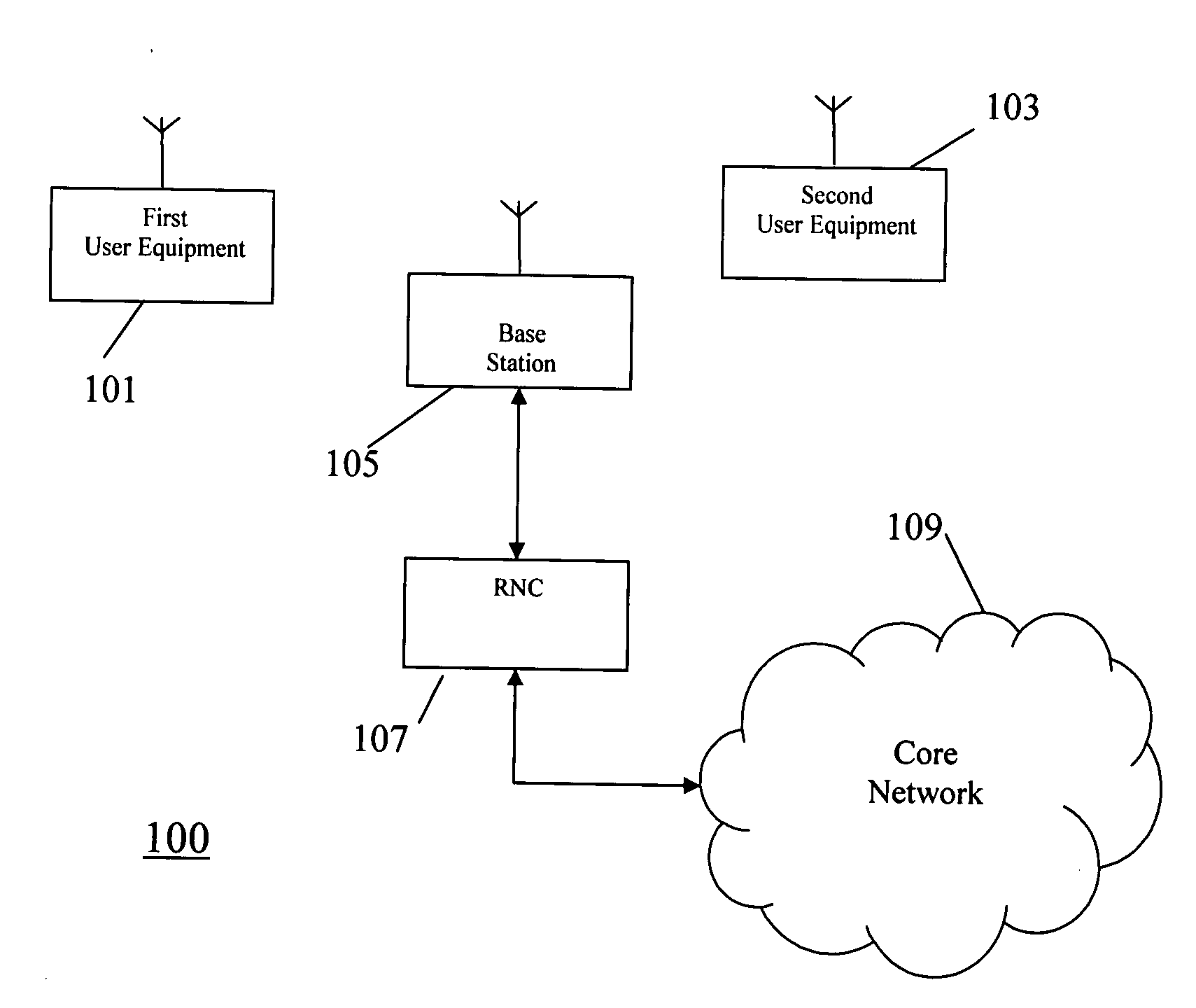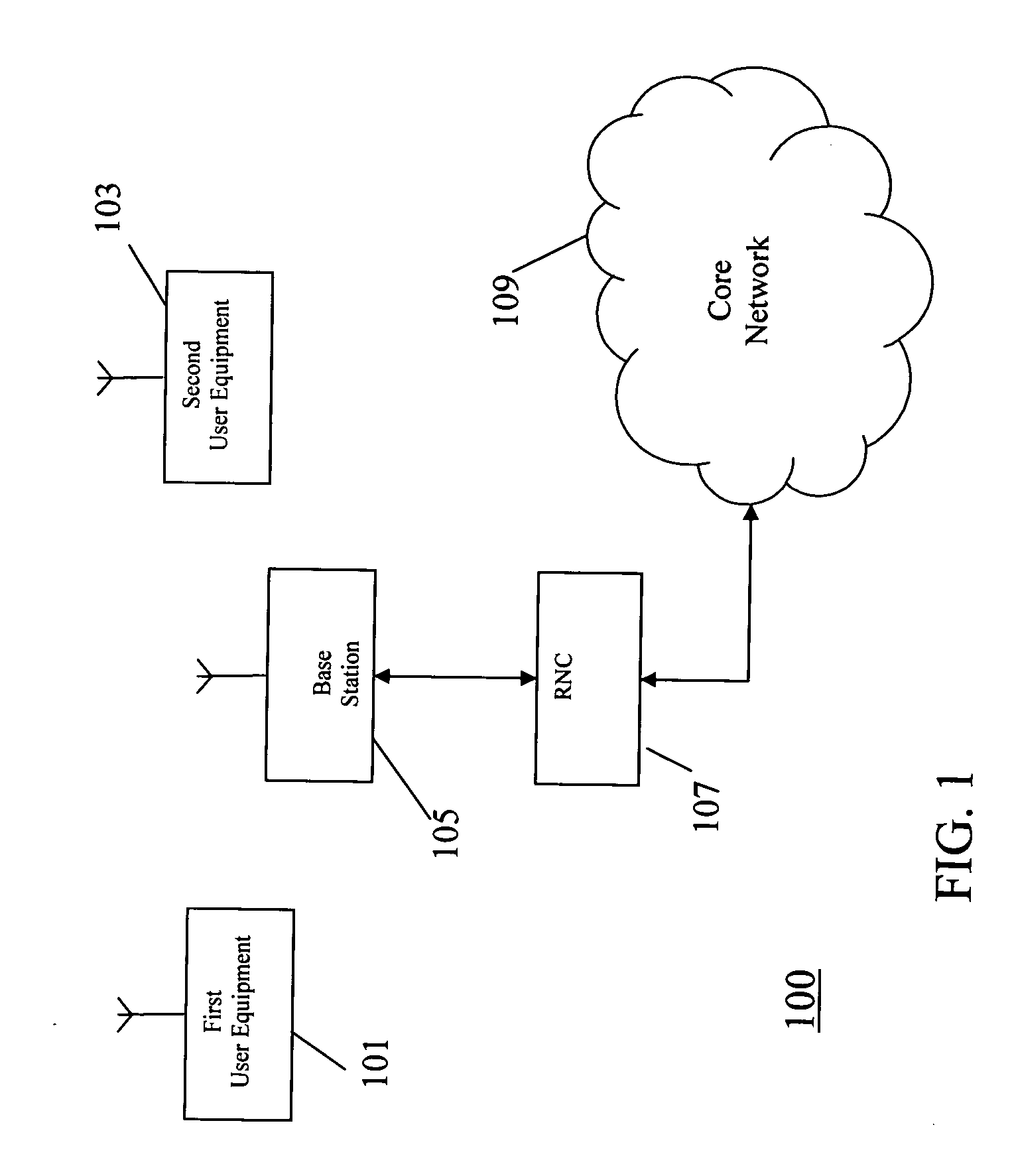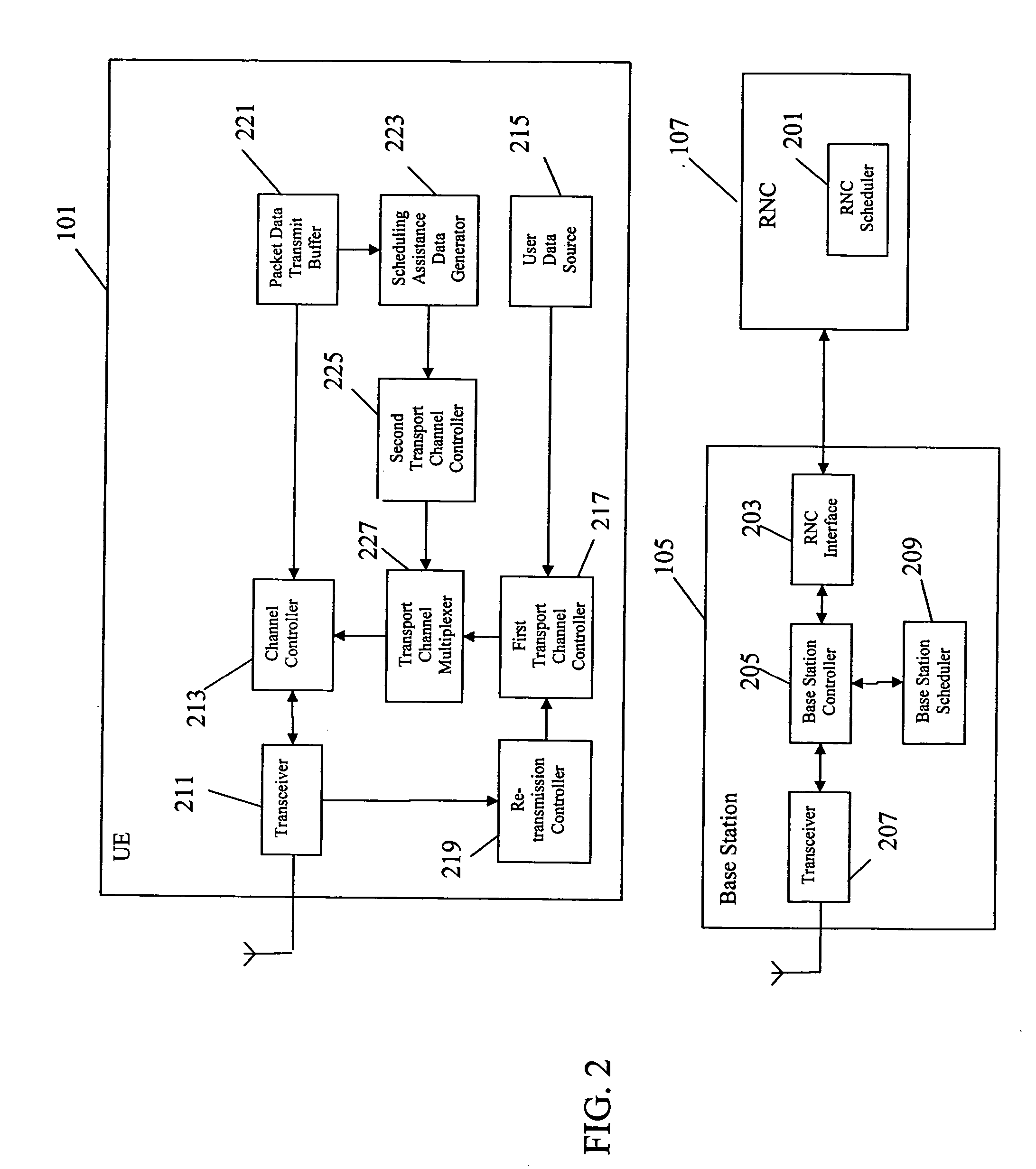Apparatus and method for communicating signaling information
a signaling information and apparatus technology, applied in the field of apparatus and methods for communicating signaling information, can solve the problems of significant interference in the other cell, unoptimized for many other applications, and suspension of uplink resources, so as to achieve alleviation or eliminate the effect of significant interferen
- Summary
- Abstract
- Description
- Claims
- Application Information
AI Technical Summary
Benefits of technology
Problems solved by technology
Method used
Image
Examples
Embodiment Construction
[0089] The following description focuses on embodiments of the invention applicable to a UMTS (Universal Mobile Telecommunication System) cellular communication system and in particular to a UMTS Terrestrial Radio Access Network (UTRAN) operating in a Time Division Duplex (TDD) mode. However, it will be appreciated that the invention is not limited to this application but may be applied to many other cellular communication systems including for example a GSM (Global System for Mobile communication system) cellular communication system.
[0090]FIG. 1 illustrates an example of a cellular communication system 100 in which embodiments of the invention may be employed.
[0091] In a cellular communication system, a geographical region is divided into a number of cells each of which is served by a base station. The base stations are interconnected by a fixed network which can communicate data between the base stations. A mobile station is served via a radio communication link by the base sta...
PUM
 Login to View More
Login to View More Abstract
Description
Claims
Application Information
 Login to View More
Login to View More - R&D
- Intellectual Property
- Life Sciences
- Materials
- Tech Scout
- Unparalleled Data Quality
- Higher Quality Content
- 60% Fewer Hallucinations
Browse by: Latest US Patents, China's latest patents, Technical Efficacy Thesaurus, Application Domain, Technology Topic, Popular Technical Reports.
© 2025 PatSnap. All rights reserved.Legal|Privacy policy|Modern Slavery Act Transparency Statement|Sitemap|About US| Contact US: help@patsnap.com



